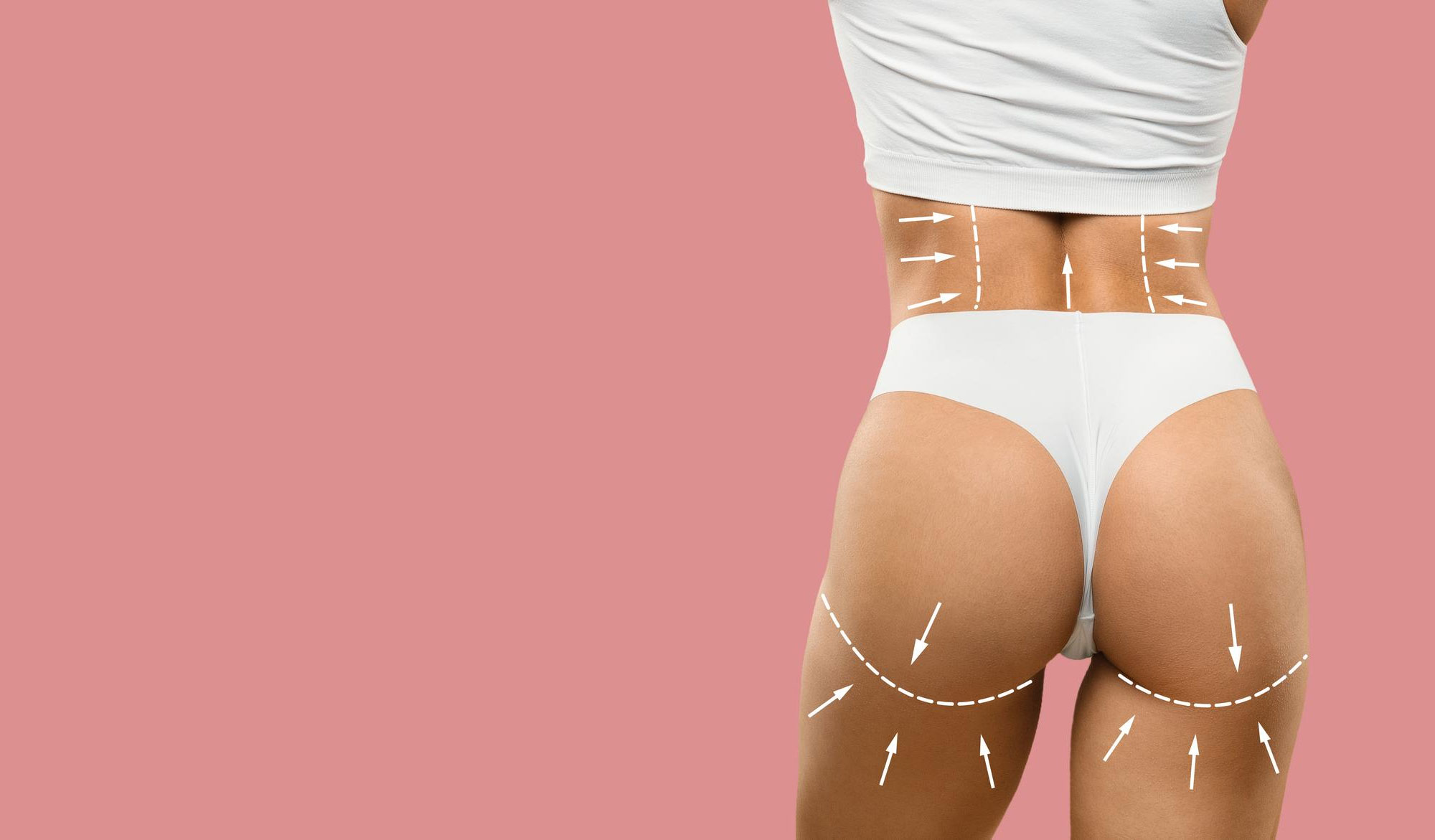What is Hair Transplantation and What is the Process?
Hair transplantation, in technical terms, is the process of taking hair follicles from the donor area (mostly the back of the head), where hair is genetically less prone to hair loss, and transplanting them to the area where hair loss is intense. One of the most important factors in this process is the ability of the transplanted hair follicles to adapt and grow in their "new home".
Causes of Hair Loss
Hair loss can be caused by many reasons. Genetic factors, hormonal changes, stress, nutritional deficiencies or certain diseases can predispose to hair loss. The most common type of hair loss is male or female pattern baldness known as "androgenetic alopecia". In this type of hair loss, a thinning is usually seen starting from the forehead line and progressing towards the crown. The hair in the donor area is genetically more resistant to hair loss. For this reason, the transplanted hair is expected to show similar durability in the new area.
Which Stages Does Hair Transplantation Consist of?
Examination and Planning: The first step is to evaluate the type and amount of hair loss. At this stage, it is determined from which areas the hair will be harvested, the size of the area to be transplanted and how many grafts (hair follicles) are required. At the same time, the general health status of the person is reviewed.
Preparation of the Donor Site: The donor area is usually located at the back of the head, between the two ears. The hair follicles to be transplanted are concentrated here and are resistant to shedding. This area can be shaved before the procedure or certain areas can be partially shortened as in some techniques with long hair.
Harvesting of Roots (FUE):
FUE (Follicular Unit Extraction): In this more recent and frequently preferred technique, individual hair follicles (follicular units) are extracted from the donor area with small punch instruments. Each follicular unit is removed with 0.8-1 mm diameter instruments. Afterwards, the small spots heal quickly and leave minimal scarring.
Preparation and Storage of Hair Roots: The collected hair follicles are kept in special solutions to keep them alive. At this point, it is of great importance that the roots are not damaged. Otherwise, the likelihood of the roots taking hold after transplantation may decrease.
Preparation of the Recipient Area and Transplantation: In the area to be transplanted, it is critical to determine the natural hairline and mimic the direction of hair growth. For this purpose, hair transplant specialists open small channels, taking into account the existing direction and density of the hair. Then, the collected hair follicles are placed into these channels.
Recovery Process: After the surgery, crusting and mild redness may occur in the recipient area. For the first few days, it is recommended to be gentle on the scalp, use hats carefully and regular dressings. The scabs fall off in about 2-3 weeks, while the transplanted hair usually experiences a temporary shedding process. The actual permanent hair usually starts to grow after 3-4 months and gradually becomes stronger.
Who is a Suitable Candidate for Hair Transplantation?
Many people who are considering hair transplantation ask the question "Am I suitable for this procedure?". There is no single answer to this question. However, some criteria clarify candidacy to a great extent.
Donor Area Adequacy: The strength and sufficient density of hair in the donor area is the cornerstone of a successful transplantation. If there are not enough hair follicles in this area, it may be difficult to achieve the desired result after transplantation.
Stability of Hair Loss: If hair loss continues very rapidly and progressively, the areas around the transplanted hair may continue to fall out in the future. Transplantation results may be more stable in people whose loss process has slowed down or paused.
General Health Status: Chronic diseases such as diabetes, bleeding disorders, serious heart conditions must be under control. Factors such as wound healing and tolerance to anesthesia are also important.
Realistic Expectations: Hair transplantation is not a miraculous method that instantly gives you thick hair. It requires careful planning and waiting for the transplanted hair to grow over time and take its natural form. Patience and understanding are important in this process.
Is there any pain or soreness during hair transplantation?
Hair transplantation is usually performed under local anesthesia. This is similar to the local anesthesia used in dental treatment. There may be a slight burning sensation during the injection of local anesthesia, but once the procedure is started, there is usually no pain. In the postoperative period, mild pain or discomfort is normal and can be largely controlled with prescribed painkillers. In this respect, it is possible to expect comfort similar to that of a dental filling. Of course, there may be variations according to the individual pain threshold, but in general, the pain is not in the "unbearable" category.
What Should Be Considered After Hair Transplantation?
Successful hair transplant surgery is not only limited to the care taken during the surgical phase. The postoperative process directly affects the success of the transplantation and the healthy growth rate of the transplanted roots. For this reason, the points to be considered after surgery should not be ignored:
First Washings: Usually after the third or fourth day, the hair is gently washed with special shampoos and lotions recommended by the hair transplant center. This washing process helps to gently shed the scabs and keep the scalp clean.
Avoiding Head Trauma: In the first few weeks, it is important to avoid external impacts as the transplanted hair follicles have not yet fully settled. It is recommended to move carefully in crowded environments or not to wear hats that cover the head tightly.
Activity Limitations: In the first week, heavy sports and extremely hot environments such as saunas or baths should be avoided as much as possible. Increased blood flow can lead to increased edema or bleeding. After about a month, it is usually safe to return to normal activities with the doctor's approval.
Smoking and Alcohol Use: Smoking and excessive alcohol consumption, both during the surgical process and during the recovery period, may adversely affect blood circulation and prevent the nourishment of the transplanted hair. For this reason, it would be appropriate to limit these habits for at least the first few weeks.
Nutrition and Supplements: Consuming foods rich in protein, iron and vitamins contributes to the strengthening of hair follicles. Some vitamin supplements such as biotin can also be taken on doctor's recommendation.
How Natural Can Hair Transplant Results Look?
The development of technology and methods has made the results of hair transplantation look natural to a great extent. When we think of hair transplantation, we should no longer think of artificial images that "look like they have been transplanted", but of hairlines that are close to natural. Several factors are decisive at this point:
Front Hairline Design: Designing a soft and wavy hairline in accordance with the face shape and facial expressions is the first key to a natural look. Planning is made by taking into account the size of the patient's forehead, facial features and existing hair structure.
Angle of Placement of Hair Roots: The direction and angle of hair growth may differ in each area. For example, the hair on the crown sometimes grows at a steeper angle, while the front hairline may be more horizontal. Mimicking these angles correctly ensures that the transplanted hair is harmonious.
Graft Selection: Single hair strands are usually used in the front hairline, while double or triple follicular units are used in areas that require density. In this way, a natural transition is achieved.
Technological Aids: Methods such as robotic hair transplantation or micromotorized FUE can increase the precision of the procedure. Nevertheless, the results of the procedures performed by experienced specialists with an artistic point of view are usually more satisfying.
Is Hair Transplantation a Permanent Solution?
Hair follicles taken from the donor area can be permanent for many years in the transplanted area as they are genetically more resistant to hair loss. Of course, genetic predisposition, aging and hormonal changes can still affect hair quality over time. However, in most cases, the loss rate of transplanted hair is quite low. For this reason, hair transplantation is generally considered a permanent and long-lasting solution.
Nevertheless, it should not be forgotten that the existing hair may continue to fall out over time even after hair transplantation. If the hair in the main area is in an aggressive shedding process, additional sessions may be required in the future. This is sometimes a process that depends on the genetic and hormonal structures of the person, independent of hair transplantation.
Which side effects can be observed after the surgery?
Major complications after hair transplantation are rare. However, some temporary side effects or complications may occur:
Swelling (edema): There may be swelling, especially on the forehead and around the eyes. This is related to fluid retention in the tissues and resolves spontaneously within a few days. Sleeping with the head elevated and applying cold compresses are effective in reducing swelling.
Crusting and Itching: It is normal for tiny crusts to form in the transplanted area. The crusts fall off within 10-15 days. In case of intense itching, emollient lotions or medications recommended by the doctor can be used.
Sensitivity in the Donor Area: In the FUT method, there may be a slight tension or soreness at the suture line. In FUE, there may be mild itching and discomfort as many small holes heal.
"Shock Loss": A few weeks after transplantation, some of the transplanted hair may fall out. This is known as "shock shedding" and is usually temporary. In about 3-4 months, the hair will start to grow back healthy.
Infection It is rare, but as with any surgical procedure, the risk of infection cannot be completely ruled out. This risk can be minimized with proper hygiene measures and antibiotic protection.
What is the Success Rate and Long Term Results of Hair Transplantation?
Research and clinical experience show that hair transplantation yields highly successful results. Most of the hair follicles taken from the donor area adapt to their new location and continue to grow. The main factors affecting the success of the procedure are as follows:
Expertise and Experience: Getting successful results in hair transplantation is directly linked to the presence of an experienced and competent team. The collection of grafts and transplantation planning is also seen as an "art" that develops over time.
Technique and Technology: Advanced microscopic dissection methods, robotic-assisted transplantation systems or micromotorized FUE devices increase the precision of the surgery. This reduces the chance of damage to the roots.
Hair Care and Additional Supplements: After the procedure, regular hair care, healthy nutrition and, if necessary, medication (finasteride, minoxidil, etc.) can support the process. For example, Platelet-Rich Plasma (PRP) applications can accelerate the healing and growth of hair follicles.
Genetic Factors: Personal genetic structure can affect the rate of hair retention and growth. In addition, the rate of hair loss can also determine the need for additional sessions in the long term.
A significant portion of those who undergo hair transplantation begin to see the final appearance of their new hair 6-12 months after surgery and easily adapt to daily life. Especially with the right care and supportive treatments, this success can increase even more. In the long term, it should be kept in mind that while the transplanted hair remains permanent, the risk of existing hair loss continues. For this reason, people with aggressive hair loss process may need additional sessions in the following years.
How to Decide on Hair Transplantation and Manage Expectations?
The decision for hair transplantation requires both physical and psychological evaluation. Hair loss can have different emotional effects from person to person. For some people, this is an extremely upsetting process, while for others it can be seen as a part of natural aging. Therefore, the following points should be considered before making a hair transplant decision:
Realistic Expectations: Hair transplantation is an art; it can give great results, but it may not always be possible to achieve 100% of the old hair density. Accepting this reality from the beginning prevents disappointment later on.
Expert Consultation: In consultations with hair transplant centers or specialists, hair analysis and suitability assessment are made. At this stage, the limits of the surgery, possible side effects and expectations should be clearly discussed.
Personal Preparation: Hair transplantation is a surgical procedure. Being physically and mentally prepared for the surgery is one of the most important steps to a successful outcome. A healthy lifestyle, a balanced diet and avoiding stress accelerate recovery both before and after surgery.
Long Term Planning: Since hair loss may continue, other sessions may be needed in the years following the transplantation. The person should make a long-term plan by considering all these possibilities.
What is the Effect of Hair Transplantation on Quality of Life?
Although the main purpose of hair transplantation is to improve one's appearance, many psychological and social benefits can be observed beyond this. Hair is an important part of self-expression, both culturally and individually. When the sparseness of the scalp is eliminated through transplantation, the person can regain self-confidence and feel younger and more energetic.
In addition, in social life, anxiety due to hair loss decreases and it becomes possible to communicate more easily. New hair helps a person to feel more "complete". Small changes in daily life - for example, returning to the process of styling hair in front of the mirror - can offer great psychological gains.
Hair Transplantation is a Journey
Beyond surgical techniques, hair transplantation is an important opportunity for a person to feel better and regain their self-confidence. This process is not just a few hours of operation; it is a journey that needs to be well managed before and after.
Getting the right information, working with experienced specialists and having realistic expectations are the keys to success. Rather than being a "miracle" offered by modern medicine and technology, hair transplantation is an effective solution supported by conscious choices and meticulous practices. With new hair, one's self-confidence can be strengthened from the "roots". This makes it possible to feel happier and more comfortable in all areas of life.






























